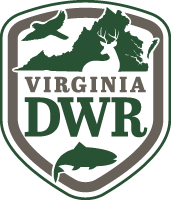Description
This is one of the most heavily visited refuges in the national wildlife refuge system, and acts as a gateway to the accessible barrier islands on the East Coast. A visitor center, bird checklists, beach access, and an array of wildlife species make this one of the nation’s premier sites for easily accessible wildlife viewing.
Administered by the U.S. Fish and Wildlife Service, Chincoteague National Wildlife Refuge is renowned for its diverse bird habitat where more than 320 species are known to use the refuge regularly during migration. It has at least 100 species of birds present at any given time. Shorebird concentrations at Chincoteague are so great during fall migration that it ranks as an important stopover area for migrating birds in the U.S east of the Rockies. The refuge was also ranked second in shorebird diversity among all 450 sites in the International Shorebird Survey in 1985. Chincoteague is also famous for the herds of Chincoteague ponies that were first introduced to the island in the 17th century. Much of the refuge’s operations focus on managing it for the benefit of the diverse wildlife species.
Chincoteague is a year-round wildlife-viewing destination. The best viewing opportunities to see the myriad of geese, ducks, and swans are in the fall and winter months. Fall is also the optimal time to view the array of raptors that pass over on their migration south. In spring, the vast number of eggs laid by spawning horseshoe crabs attracts migrating shorebirds, supplying them with a crucial food source to fuel their journey north. This makes Chincoteague second only to Delaware Bay as a feeding area for ruddy turnstone, red knot, dunlin, semipalmated sandpiper, and sanderling. Chincoteague is also home to threatened and endangered wildlife, including Delmarva fox squirrel, piping plover, bald eagle, and Atlantic loggerhead sea turtle.
Wildlife Sightings
Birds Recently Seen at Chincoteague National Wildlife Refuge (as reported to eBird)
- Canada Goose
- Tundra Swan
- Wood Duck
- Northern Shoveler
- Gadwall
- American Wigeon
- Mallard
- American Black Duck
- Northern Pintail
- Green-winged Teal
Amenities & Access Considerations
Amenities
- Visitor/Nature Center
- Bike Trails
- Fee
- Accessible
- Hiking Trails
- Interpretive Nature Program
- Interpretive Trail
- Lookout Tower
- Parking
- Restrooms
- Kayak/Canoe Launch
- Observation Platform
- Scenic Drive/Driving Tour
Maps & Directions
Physical Address: 8231 Beach Road, Chincoteague Island, VA 23336
From US-13 in Oak Hall, take Route 175. Travel east on Rt 175/ Chincoteague Rd to Chincoteague Island, go straight at the light at the foot of the drawbridge onto Maddox Blvd. and follow the signs to Assateague Island National Seashore and Chincoteague National Wildlife Refuge.
What to Know Before Visiting
The Virginia Bird and Wildlife Trail is a network of more than 500 premier wildlife viewing sites across the state. Walk a nature trail, paddle a river, or enjoy a scenic overlook and you’ll soon understand what makes Virginia a premier destination for birding and wildlife viewing.
Site Information
Managed By:
- U.S. Fish and Wildlife Service

